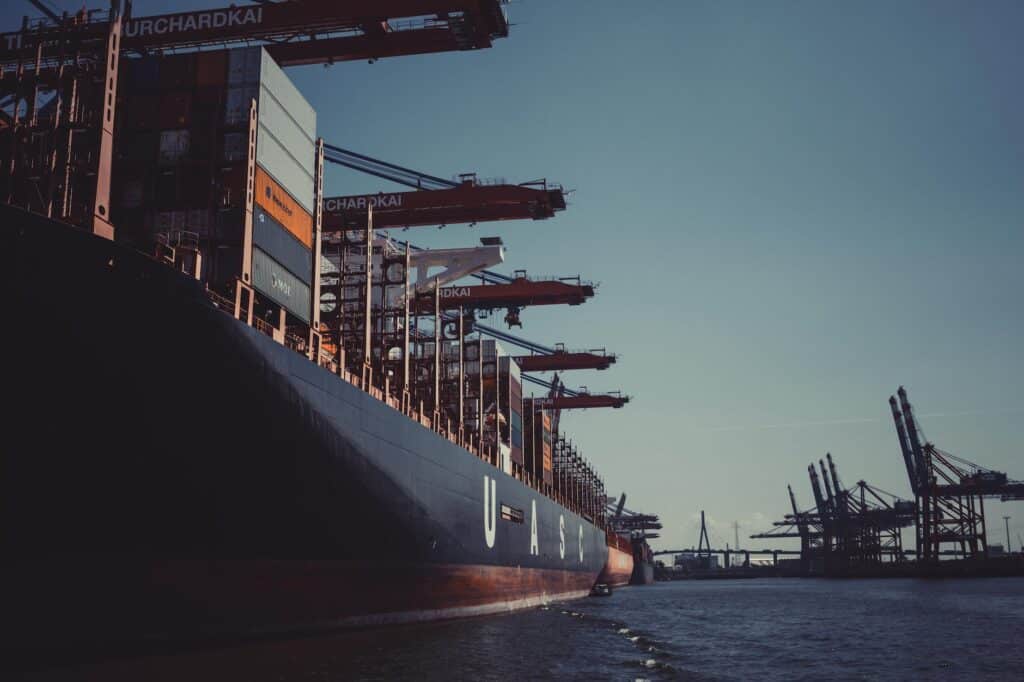Ports use a variety of cranes for different purposes. Some common types of cranes used in ports include the following. It depends on the cargo handled and the volume. It is also affected by the degree of automation sort by the port.
- Ship-to-Shore (STS) Cranes: These cranes are used for loading and unloading containers from ships. They are typically massive in size and are mounted on rails along the quay or dock. STS cranes have a high lifting capacity and can reach across multiple rows of containers.
- Rubber-Tired Gantry (RTG) Cranes: RTG cranes are used for handling containers within the port yard. They are equipped with rubber tires, allowing them to move easily and quickly between container stacks. RTG cranes are commonly used in container terminals and can stack containers vertically.
- Mobile Harbor Cranes (MHCs): MHCs are versatile cranes that can handle various types of cargo, including containers, bulk goods, and general cargo. They are mounted on wheels and can be easily moved around the port. MHCs often have a telescopic boom that provides flexibility in reaching different areas of the port.
- Reach Stackers: Reach stackers are used for lifting and moving containers and other heavy loads in port terminals. They are equipped with a hydraulic arm and can stack containers vertically. Reach stackers are more compact than other types of cranes, allowing them to maneuver in tight spaces.
- Straddle Carriers: Straddle carriers are specialized vehicles used for the transportation and stacking of containers in port yards. They have legs or “straddles” that can be extended to straddle containers, allowing them to lift and transport them. Straddle carriers are commonly used in ports with high container throughput.
- Floating Cranes: Floating cranes are large cranes mounted on a floating barge or vessel. They are used for heavy lifting operations in ports, such as loading and unloading oversized or heavy cargo that cannot be handled by other types of cranes. Floating cranes are particularly useful in ports without dedicated quay cranes or where additional lifting capacity is required.
More PortSEurope news about port equipment in the region
Copyright (C) Ports Europe. All Rights Reserved. 2023.

